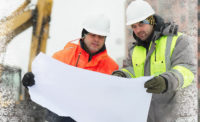If your organization is still wandering around the “train station” of recognition, planning, policies implementation and various other aspects relating to the aging workforce; I regret to tell you the train has long since left the station. The aging workforce has gone from predictions and speculations to reality, cold hard facts and market trends. Almost everywhere you look there is another aspect of this paradigm that is being explained or touted. Consider the impact that email has had on the workforce in the last two decades; that’s the magnitude of what an aging workforce is going to have in the next two decades. Enormous.
This short article can’t begin to address the plethora of different areas that the aging workforce has, and will continue to, impact. Purely from a statistical aspect it is mind blowing. Ten thousand baby boomers reach 65 years of age every day; 20 percent of all employees are above 55 years of age; in just six short years more than 30 percent of the national work force will be between 65 and 74 years of age.
A force to reckon with
This aging work force will require more focus on disability accommodations; have higher cost of health care; and put an emphasis on flexible work schedules and work conditions. Aging boomers will still represent a significant amount of the brain power that has brought us from the industrial revolution to the information age and now the digital age, and they will remain a large contributor of future achievements. Cutting off the contributions of older workers would be a catastrophic miscalculation for any organization going forward. These veterans have been trend setters throughout their lives and they will most certainly continue to be a force worth reckoning.
Trends to watch
Two specific paradigms shifts will make an enormous impact to all organizations. For years we have watched the centralization and outsourcing of call center type functions. Employee (or contractor) functions such as technical help desk, order taking, customer support, telephone payment centers and many others will change drastically. Just as we watched these functions become centralized and sent overseas, there will be a decentralization and deployment into retirement villages across the country. Think about the impact. Instead of mass calls being channeled overseas, what if we have employees equipped with vital information, equipment knowledge and good health working from retirement homes across America?
This goes hand in hand with the second paradigm shift. Organizations will get better and better at “virtual employees.” When you think of virtual employees we often think about executives “working from home.” This could be the business model going forward -- staffing seasoned employees as telecommuters who are connected to the “internet of everything.”
Making accommodations
Accommodating the aging work force will be as dramatic as the advent of child labor laws or no-fault workers’ compensation legislation. Accommodation will be less an occasional response to an injured or sick employee and more of a planned strategy for the overall workforce. Accommodation will move from facilitating workers for reduced production or production of any kind, to facilitating optimal value from essential employees that just need to work differently than the traditional “regular employee.”
New business models?
This new level of accommodation will not be for senior- or executive-type employees only; it will draw in all level of employees to add value in a different way than ever before. A 40-hour work week will subside in importance compared to providing a needed service to the organization. More jobs will be “tandem sourced.” For example, an organizational need may be tasked to two or more older workers who cannot devote the time, perhaps have health issues or simply don’t desire to handle the whole task. But in tandem they can satisfy the organization’s need and not tax their abilities, time allotment, stamina or other factors. Quite possibly the organizational need could be assigned to a “nest” of older workers where the task just needs to be done and the “nest” of veteran employees can determine in real time how the task will be accomplished within their group. This business model would allow older boomers to stay focused on organizational needs without conflicting with medical appointments, grandkids, the need for physical exercise and other aspects of their lifestyles.
Stopping the “brain drain”
These paradigm shifts in the way we look at the aging workforce will allow forward-thinking organizations to retain institutional memory; provide real solutions to the “brain drain” on their organization; facilitate an agile talent pool that transforms individual limitations into collective strengths; provide long-term consistency to the work force; and most of all empower aging workers to continue to add value long after their traditional tenures have been completed.
Conversely, organizations that do not embrace these paradigm shifts in the labor force will find themselves lacking seasoned employees; fall behind competitors that do accommodate the aging workforce head on; and be more dependent on outsourced service from less seasoned and knowledgeable contractors.
An outsourcing goldmine
Proper planning for the nation’s aging workforce demographics can translate into an outsourcing goldmine. Don’t think that the only way to fully utilize older workers is to channel outsourced work to them. That is far from the case, but it is a dynamic that fits well. Providing a flexible, adaptable, non-traditional work environment is paramount regardless of what business sector the organization operates in.
Maximizing your assets
It’s been suggested that a multigenerational workforce will need to be developed and implemented before older workers can be fully integrated. Again, that train has long since left the station. For the most part, baby boomers have worked across multigenerational organizations longer than the Millennials have been alive. We’re not talking about retraining a tech savvy, computer-literate seasoned workforce, we’re talking about rethinking how our organizations best utilize their human assets.
Many if not most organizations tout their employees as their most important assets. It only make sense that as millions of employees become more experienced, older and wiser and continue to provide wisdom and insight that we structure our organizations so we can fully benefit from all of these attributes.
Where will your organization be in times to come? Still in the train station wondering what impact the aging work force will have? Or will you way down the road with older workers intertwined deep into the fabric of your success?


